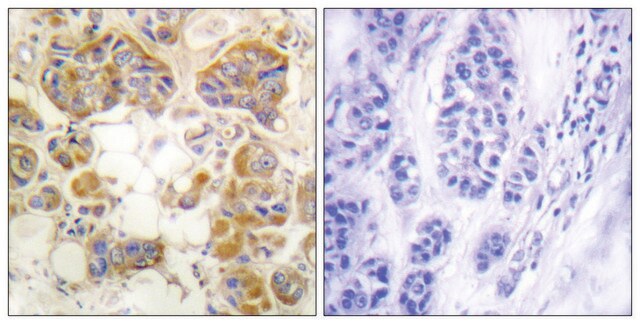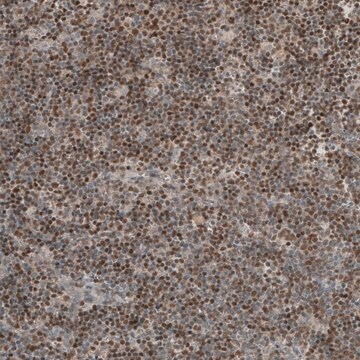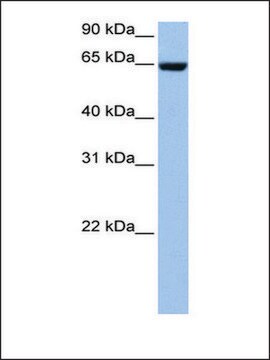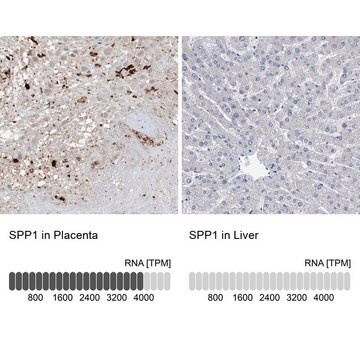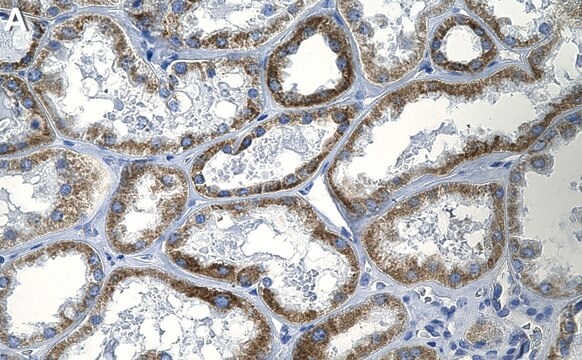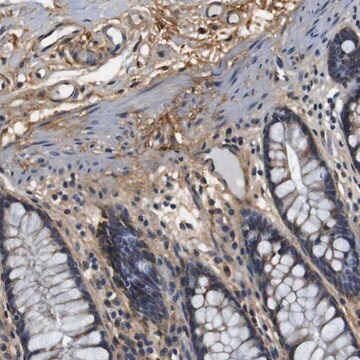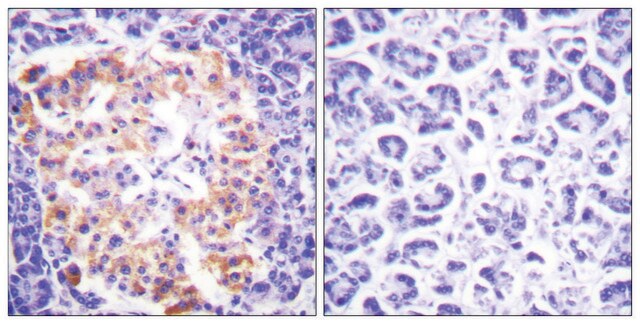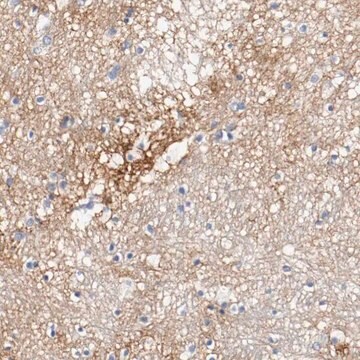一般說明
We are committed to bringing you greener alternative products, which adhere to one or more of The 12 Principles of Green Chemistry.This antibody is Preservative-free, produced without the harm or sacrifice of animals and exceptionally stable to allow for ambient shipping and storage if needed and thus aligns with "Waste Prevention", "Designing Safer Chemicals" and "Design for Energy Efficiency".
Click here for more information.
ZooMAb® antibodies represent an entirely new generation of recombinant monoclonal antibodies.Each ZooMAb® antibody is manufactured using our proprietary recombinant expression system, purified to homogeneity, and precisely dispensed to produce robust and highly reproducible lot-to-lot consistency. Only top-performing clones are released for use by researchers. Each antibody is validated for high specificity and affinity across multiple applications, including its most commonly used application. ZooMAb® antibodies are reliably available and ready to ship when you need them.
特異性
Clone 1N10 is a ZooMAb® Rabbit recombinant monoclonal antibody that specifically detects Collagen Type VI. It targets an epitope within 21 amino acids from the N-terminal region.
免疫原
KLH-conjugated linear peptide corresponding to 21 amino acids from the N-terminal region of Human Collagen Type VI.
應用
Quality Control Testing
Evaluated by Western Blotting in L6 cell lysate.
Western Blotting Analysis: A 1:1,000 dilution of this antibody detected Collagen VI in L6 cell lysate.
Tested Applications
Western Blotting Analysis: A 1:1,000 dilution from a representative lot detected Collagen VI in Human Heart, Mouse Heart, and Human Liver tissue lysates.
Affinity Binding Assay: A representative lot of this antibody bound Collagen VI peptide with a KD of 1.0 x 10-12 in an affinity binding assay.
Immunohistochemistry (Paraffin) Analysis: A 1:100 dilution from a representative lot detected Collagen VI in human liver tissue sections.
Immunofluorescence Analysis: A 1:100 dilution from a representative lot detected Collagen VI in human liver tissue sections.
Note: Actual optimal working dilutions must be determined by end user as specimens, and experimental conditions may vary with the end user.
標靶描述
Collagen alpha-1(VI) chain (UniProt: P12109; also known as Collagen Type VI) I encoded by the COL6A1 gene (Gene ID: 1291) in Human. Collagen is the most abundant protein in the body that is predominantly synthesized by fibroblasts. However, epithelial cells may also synthesize small amounts of collagen. The collagen super family includes over 20 different types of collagens with at least 38 distinct polypeptide chains. Collagen Type VI acts as a cell-binding protein. In addition to anchoring the basement membrane to the pericellular matrix in muscle, research also indicates a role for collagen VI in cell signaling and cell migration. It is an extracellular matrix (ECM) component present in virtually all connective tissues, including cartilage, bone, tendon, muscles, and cornea, where it forms microfibrils in close association with basement membranes. The basic structural unit of collagen VI is a heterotrimer composed of the -1(VI), -2(VI), and -3(VI) chains (encoded by the COL6A1, COL6A2, and COL6A3 genes, respectively). The 1(VI) and 2(VI) chains are similar in size and domain structure, they contain a 335- or 336-amino acid triple helix region that is characteristic of all collagens. Flanking the triple helix are domains homologous to the A-type domains found in von Willebrand factor (VWA domains). 1(VI) and 2(VI) contain one VWA domain N-terminal to the triple helix (N1) and two VWA domains C-terminal of the helix (C1 and C2). The 3(VI) chain, on the other hand, is much larger with 10 N-terminal (N1 N10) and two C-terminal VWA domains (C1 and C2), and several other types of identifiable domains in the C terminal region (C3 C5). Mutations in COL6A1 gene are known to cause Bethlem myopathy, a benign proximal myopathy characterized by early childhood onset and joint contractures most frequently affecting the elbows and ankles. This ZooMAb® recombinant monoclonal antibody, generated by our propriety technology, offers significantly enhanced specificity, affinity, reproducibility, and stability over conventional monoclonals. (Ref.: Scacheri, PC., et al. (2002). Neurology. 58(4); 593-602; Chu, ML., et al. (1989). EMBO J. 8(7); 1939-1946).
外觀
Purified recombinant rabbit monoclonal antibody IgG, lyophilized in PBS with 5% Trehalose, normal appearance a coarse or translucent resin. The PBS/trehalose components in the ZooMAb formulation can have the appearance of a semi-solid (bead like gel) after lyophilization. This is a normal phenomenon. Please follow the recommended reconstitution procedure in the data sheet to dissolve the semi-solid, bead-like, gel-appearing material. The resulting antibody solution is completely stable and functional as proven by full functional testing. Contains no biocide or preservatives, such as azide, or any animal by-products. Larger pack sizes provided as multiples of 25 μL.
重構
30 μg/mL after reconstitution at 25 μL per vial. Please refer to guidance on suggested starting dilutions and/or titers per application and sample type.
儲存和穩定性
Recommend storage of lyophilized product at 2-8°C; Before reconstitution, micro-centrifuge vials briefly to spin down material to bottom of the vial; Reconstitute each vial by adding 25 μL of filtered lab grade water or PBS; Reconstituted antibodies can be stored at 2-8°C, or -20°C for long term storage. Avoid repeated freeze-thaws.
法律資訊
ZooMAb is a registered trademark of Merck KGaA, Darmstadt, Germany
免責聲明
Unless otherwise stated in our catalog or other company documentation accompanying the product(s), our products are intended for research use only and are not to be used for any other purpose, which includes but is not limited to, unauthorized commercial uses, in vitro diagnostic uses, ex vivo or in vivo therapeutic uses or any type of consumption or application to humans or animals.

